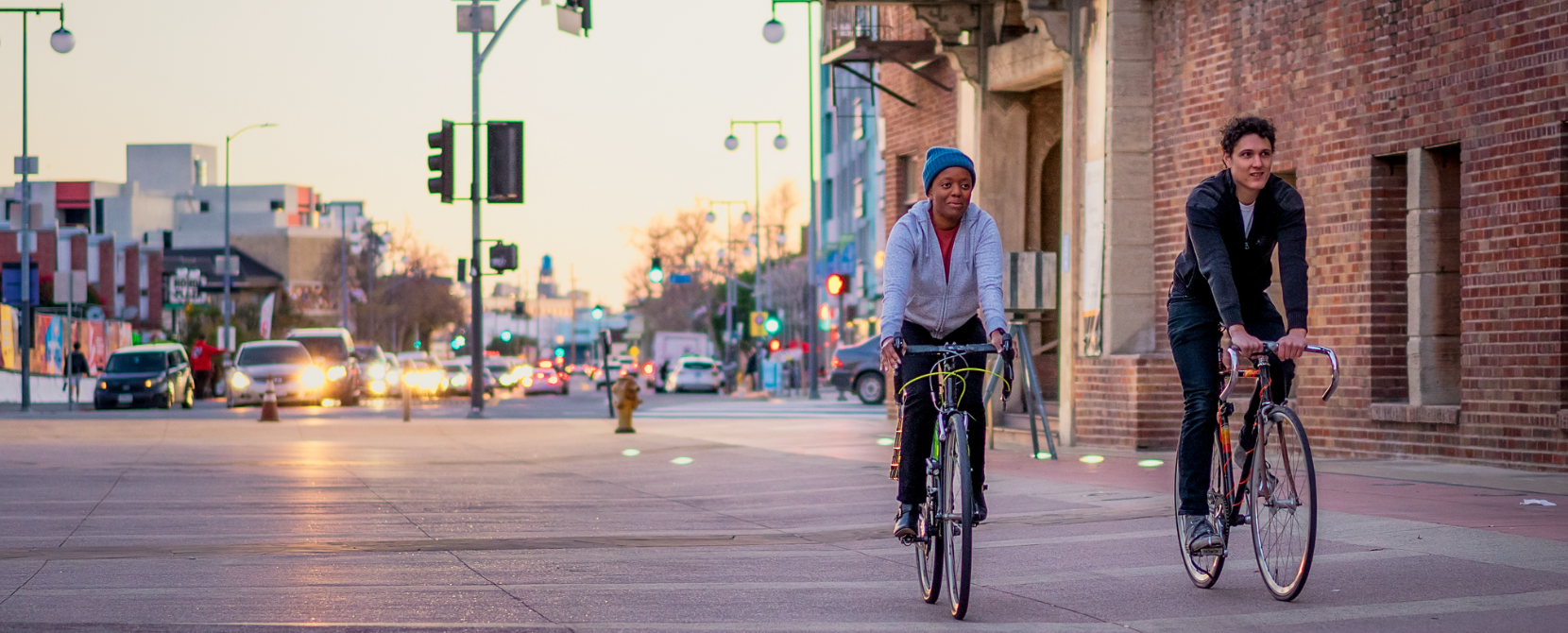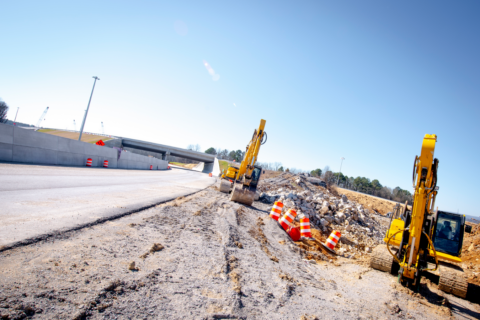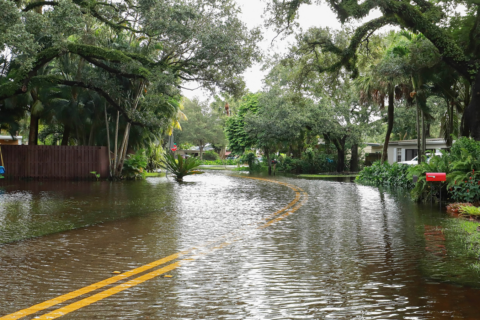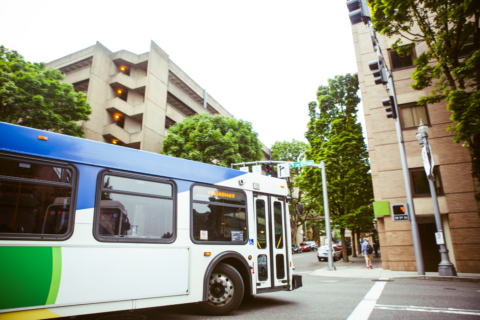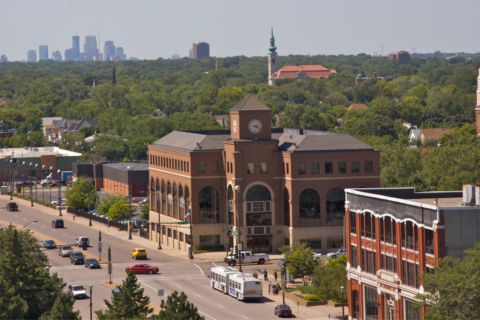Co-Authored with: Ndemazea Fonkem, Federal Advocacy Intern at the National League of Cities
As we close out the second of five years of historic infrastructure grant funding from the Bipartisan Infrastructure Law, there is still time for cities, towns and villages to bring an infrastructure grant home. The U.S. Department of Transportation (USDOT) is offering several rounds of grants available to governments of all sizes as well as technical assistance.
Whether your city is just getting started with your first grant or your community wants to build the best application possible, below are ten key tips to make sure your application is competitive.
- The NOFO is Your Roadmap
Everything that you need to know to win a federal transportation grant is explained in the federal Notice of Funding Opportunity (NOFO) and the links within it. The federal government wants the grant process to be fair so once the grant is announced the NOFO is your primary resource in addition to webinars provided by USDOT. Each application is scored on the merit of your answers to the questions in the NOFO, so reading and responding to it closely is key.
- Eligibility is Essential to Win
Sweepstakes use the phrase “you must be eligible to win.” This is also true of federal grants. Sometimes potential applicants get so excited about grants that they don’t confirm their project meets all the eligibility requirements in the NOFO or is a good candidate for federal funds.
For example, the Bridge Improvement Program is only for bridges rated by engineers to be in poor condition or in fair condition but at risk of falling into poor condition. Several applicants for the program sadly applied only to realize that their bridge was in better condition than the NOFO allowed making their projects ineligible.
- Put Your Community First
Don’t forget to explain your community and put the story of residents at the center of your application. The reviewer at USDOT has likely never been to your community, so how you describe the project in the context of your community and who it would help is essential to a successful application.
A good test of an application is to share it with someone who is not familiar with the project or your community and see what they take away and what questions they are left with.
- Do You Have a Project or an Idea?
Transportation projects go through many phases to arrive at construction – ideation, planning, community outreach, preliminary engineering, environmental review, funding and construction. Many transportation grants allow applicants to apply for planning grants to take an idea and make it a project, and then come back for a second grant for construction.
- Consider Partnership if Your Community (or Budget) is Smaller
Not every community is able to come up with the resources or staff capacity to apply for a federal grant, but that doesn’t mean you’re out of the grant game. Many Bipartisan Infrastructure Law grant programs allow a local government to partner with other eligible entities to bundle your project into a larger grant application.
For example, a village could partner with their county, metropolitan planning organization (MPO), state or tribal nation to work on a grant. Your community will still need to contribute, but collaboration can leverage your resources and allow for greater success.
- Prepare Your Budget for Reimbursement
When your project wins, the grant recipient will begin to put together a legal and binding grant agreement with USDOT. Until it is signed by all parties, nothing for the project can be purchased.
Once the signed grant agreement is in place, the city will be able to start purchasing what’s needed for the project. When those are costs are submitted to USDOT, the recipient will be reimbursed. Essentially, your grant pays you back. Your budget will need to account for that.
- Be Clear About Local Match Sources
As you craft your grant application, it is important to be explicit on the sources of your “non-federal” or local matches. These matches are not reimbursable with federal funds and indicate the local investment in delivering the product. Each NOFO has a different requirement for the percentage of funds required for the non-federal match, including funding opportunities with flexible or reduced matches for communities.
Project partners such as state departments of transportation, universities, nonprofit partners or philanthropic organizations can all be investors in your project and help produce a “hard” monetary match to add to the budget. “Soft” matches, or non-cash matches, are non-monetary contributions of space, time, labor, services or expertise are equally important parts of the application that highlight the personal investment of partners in the community. The valuation of soft matches can show dedication to the project alongside hard matches. Make sure your budget numbers add up clearly so they don’t create any unnecessary questions.
- Time Out Your Federal Environmental Clearance
One of the biggest questions in the grant review is how long it will take until your project is ready to build. Within each NOFO there are two unique deadlines: the obligation deadline and the expenditure deadline.
The obligation deadline is the final date by which a grant award recipient must have an executed grant agreement with USDOT. Because federal environmental approvals differ from typical state processes, first-time applicants talk with their city engineer or a firm to make sure their project timing expectations are on target.
The expenditure deadline is the last date on which all grant funding must be expended, meaning that anything past this date is not reimbursable with grant funds, even if more was allocated in the grant.
The strongest grant applications are for projects that can comfortably be completed by both deadlines. When writing your application, keep these deadlines in mind and be honest about your capacity, factoring in delays and administrative slowdowns to ensure adherence.
- Letters of Support are a Bonus, but Not Required
Some cities ask their Congressional delegation and community groups to show support for project applications by submitting letters of support. While these can be helpful, they are not technically part of the merit review process.
- Ask Questions and Ask for Feedback
NOFOs are the guide to grants, but the USDOT always provides an opportunity for applicants to submit additional questions which they respond to as “Frequently Asked Questions” (FAQ). If you read the NOFO and still have questions, you reference the FAQ from past funding rounds or submit your questions to USDOT. You can also use the USDOT Grants Navigator to find resources.
If your application is unsuccessful, USDOT offers every applicant the opportunity to debrief with staff so you can improve your application for future rounds.
For more transportation resources visit NLC’s Resource Library.
